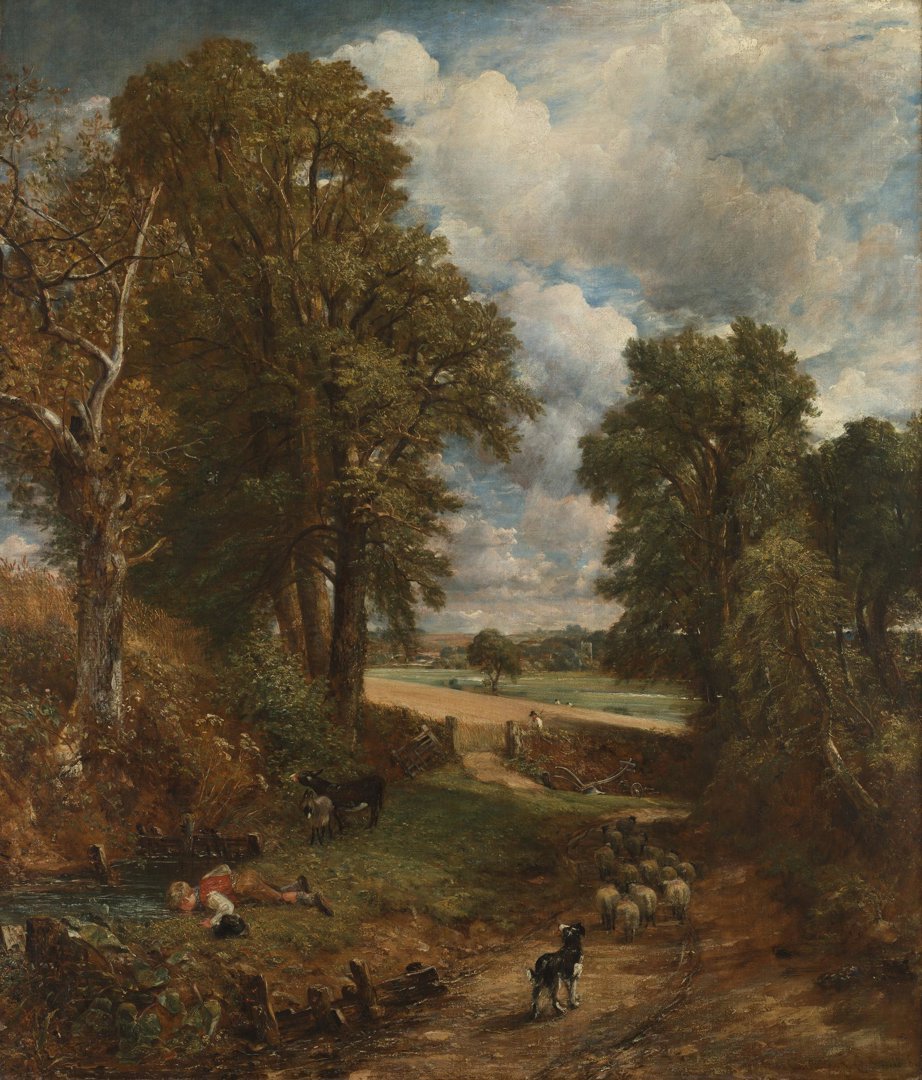National Gallery Visits returns, touring Constable’s 'The Cornfield' all over England
Issued June 2023
Summer 2023 sees the third iteration of the National Gallery’s critically acclaimed Visits tour. This year John Constable’s The Cornfield will pop up in unusual and unexpected public spaces around England.
Working with teams from arts charities, local museums, and community groups, the painting will be appearing in high streets and community spaces across June and July.
Engagement activities are led by our partners and shaped in response to their community's needs. Activities are already underway to enthuse groups about the painting coming to their hometown and to help them think about what to look for when seeing it up close. These include street art, songs, dances, poems, and the design of special sensory experiences.
Although completed in Constable’s London studio in 1826, this painting of a Suffolk lane, shown winding into a cornfield, is based on Fen Lane which Constable often walked along as a boy from his own village of East Bergholt to Dedham where he attended school. The lane still exists but the countryside and village beyond it were largely invented. 'The Cornfield' often inspires viewers to think about what home means to them and how it makes them feel. Constable himself wrote that ‘painting is but another word for feeling’.
Previous 'Visits' tours have not only introduced thousands of people to the National Gallery but have also provided the opportunity for them to engage with and benefit from culture in their local areas in the longer term. Audiences all over the UK who said they were not regular visitors to cultural spaces responded afterwards that they were interested in seeing art again in the future. Workshops and activities delivered in partnership with local museums and galleries helped them grow their own audiences in turn. Participants in workshops remarked afterwards on how inclusive they had found the experience and described feeling more confident in themselves and their ability to create art and express themselves.
Gabriele Finaldi, Director of the National Gallery, said: 'Running the Visits tour is a highlight for us at the Gallery. It is an exciting way for us to connect with new partners all over the UK, and to be part of their outstanding work with their local communities. Through our collection we want to enrich lives by connecting art, people and ideas across centuries, countries and cultures; our partners drive the conversations about the painting and how they want to respond to it. It is always exciting to see the playful, creative and inclusive learning opportunities that grow out of these collaborations.'
Mary McMahon, Bernays Curatorial Fellow of British Paintings, said: 'Constable’s paintings encourage us to engage with the beauty of the countryside that surrounds us in the UK, and the role memory plays in our attachment to it. It’s the perfect painting to remind everyone who sees it that wild spaces, just like great art, belong to us all.'
Notes to editors
Image caption
John Constable
'The Cornfield'
1826
Oil on canvas
143 × 122 cm
© The National Gallery, London
John Constable is famous for his landscapes which often depict the Suffolk and Essex countryside where he was born and lived in his youth. He made many open-air sketches, using these as a basis for his large exhibition paintings, which were often worked up in the studio in central London. His pictures are extremely popular today, but they were not particularly well received in England during his lifetime. Constable was born in East Bergholt, Suffolk. He was largely self-taught and developed his career slowly. In 1799 he was a probationer, and then from 1800 a student at the Royal Academy schools. He exhibited from 1802 at the Royal Academy in London, and later at the Paris Salon. Constable was influenced by Dutch and French artists, but the realism and vitality of his work made it highly original.
The National Gallery, London
The National Gallery is one of the greatest art galleries in the world. Founded by Parliament in 1824, the Gallery houses the nation’s collection of paintings in the Western European tradition from the late 13th to the early 20th century. The collection includes works by Artemisia Gentileschi, Bellini, Cézanne, Degas, Leonardo, Monet, Raphael, Rembrandt, Renoir, Rubens, Titian, Turner, Van Dyck, Van Gogh and Velázquez. The Gallery’s key objectives are to care for and enhance the collection and provide the best possible access to visitors. Admission free. More at nationalgallery.org.uk
Twitter @nationalgallery
Facebook @thenationalgallery
Instagram #nationalgallery
YouTube The National Gallery
Press enquiries
National Gallery Press Office email press@ng-london.org.uk
Publicity images can be obtained from https://press.nationalgallery.org.uk/

